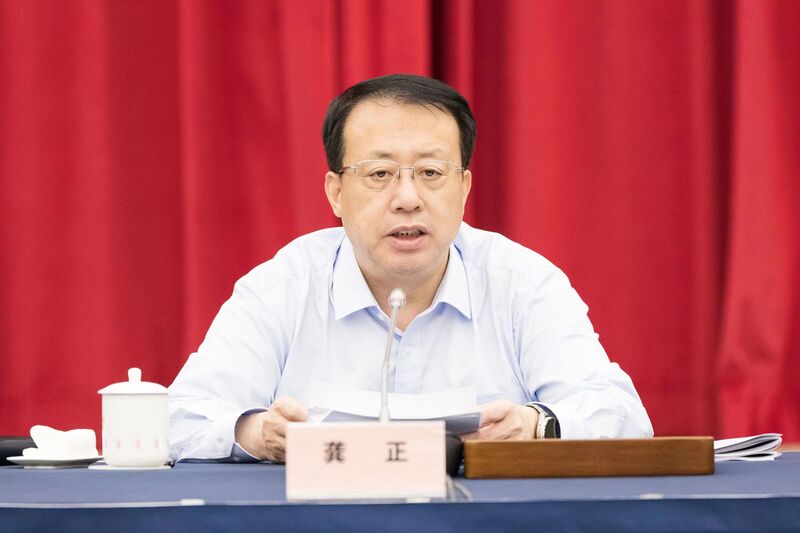To Develop | Looking Back at Shanghai Research, Mao Zedong pointed out that "Shanghai has a future, and this research will lead to development | industry | research"
In 1956, the Central Committee of the Communist Party of China conducted a large-scale investigation and research throughout the entire party. At that time, the Eighth National Congress of the Communist Party of China was about to be held, and research provided direction for Mao Zedong and other central leaders to explore a socialist construction path that was suitable for their national conditions.
The direct result of the research was Chairman Mao Zedong's famous speech "On the Ten Major Relationships" delivered at the expanded meeting of the Central Political Bureau on April 25th. Mao Zedong summarized the issues discovered in this survey, mainly in economic construction and also in national political life, as the top ten relationships. The proposal of "making good use of and developing the old foundation of coastal industry" and other ideological policies has brought historic development opportunities to Shanghai, and also provided strategic guidance for Shanghai to fully leverage the advantages of the old industrial base and serve the national industry and modernization construction during the socialist construction period.
On January 10, 1956, Mao Zedong inspected the Jiangnan Shipyard in Shanghai.
Spend 43 days listening to reports from 35 departments
For a period of time starting from December 1955, Mao Zedong and Liu Shaoqi, as well as other central leaders, spent a lot of time conducting investigations and research while dealing with busy daily state affairs. The research method mainly involves listening to reports from 35 departments of the State Council and party committees of various provinces, cities, and autonomous regions, as well as reading written reporting materials from various regions. Mao Zedong, Chen Yun and other leaders also conducted on-site inspections in Zhejiang, Shanghai, Hubei, Guangdong and other places.
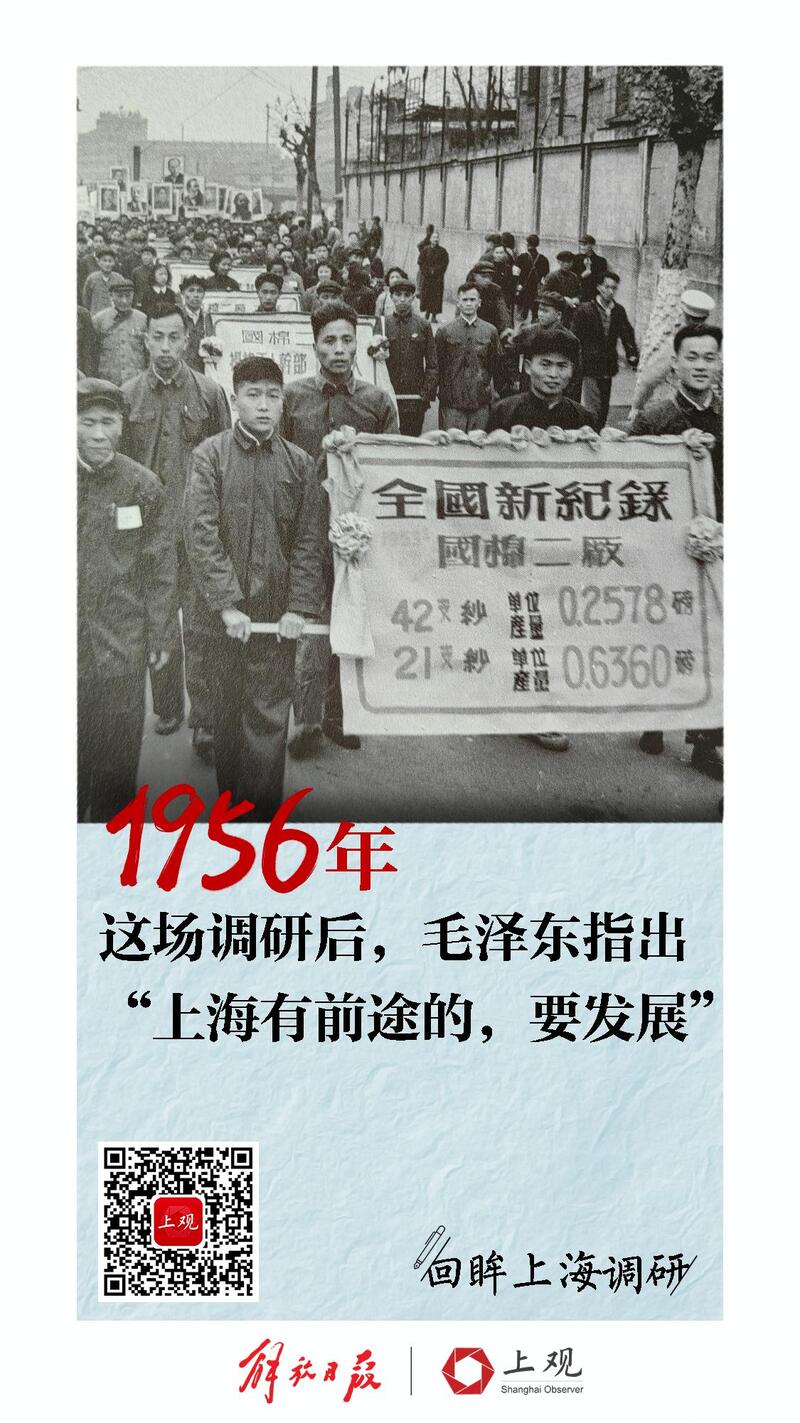
Mao Zedong began listening to reports from 35 departments of the State Council, including industry, agriculture, commerce, transportation, and finance, as well as reports from the National Development and Reform Commission on the Second Five Year Plan, starting from February 14, 1956. The actual listening time was 43 days until April 24. He wakes up early every morning to listen to reports, intersperses with handling party and government affairs, continues to study report materials after listening to reports, and works until late at night before going to bed to rest. During this period, Mao Zedong was once very tired. In his own words, it was "on the bed and underground, on the underground bed" every day. The reports convened by Mao Zedong were almost always attended by Zhou Enlai, with occasional participation from Liu Shaoqi, Deng Xiaoping, Chen Yun, and others. This actually became a collective investigation of the main leadership members of the central government.
At the same time as reporting to 35 departments, at the suggestion of Li Fuchun, two to three hundred important factories and construction sites from the industrial and transportation departments also made written reports to the Party Central Committee and Mao Zedong.
It is necessary to fully utilize coastal industries
The issue mentioned in the reports of Shanghai Tool Factory, Shanghai Oil and Fat Second Factory, and public-private partnership Tianfeng Paper Mill is that the production policies of the enterprises are not clear.
This is closely related to the positioning of Shanghai's industrial development in the early stage of New China. During the First Five Year Plan period, Shanghai was not a key area for national industrial construction. Due to national defense and security concerns, coastal provinces and cities with good industrial foundations such as Shanghai have been restricted in their development, such as not building new factories or conducting major expansions, and the production potential of many industries has not been fully realized. From the data of 40 industrial products in Shanghai at that time, except for heavy industry, the equipment utilization rate was relatively high. The equipment utilization rate of 35 products was below 80%, of which 16 were between 20% and 40%, and 8 were below 20%.
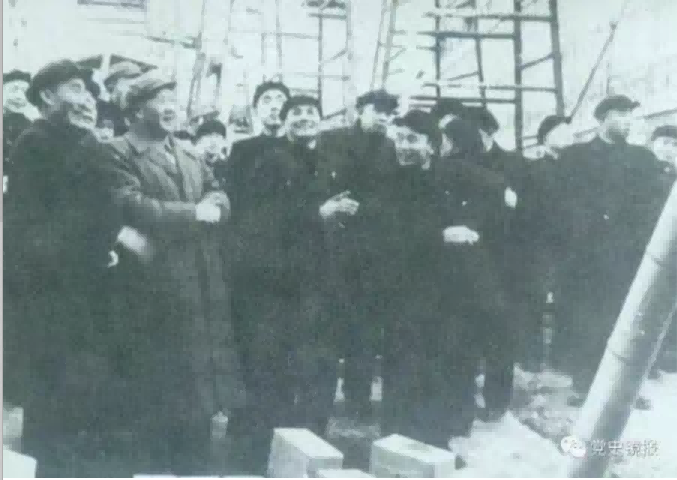
After this survey, Mao Zedong and other central leaders have gained a new and deeper understanding of Shanghai. According to the report materials from various ministries and local party committee comrades, from the establishment of the People's Republic of China to the end of 1955, Shanghai's profits accounted for 20.9% of the total national basic construction investment in the first five years. One-third of the gauze and cigarettes sold nationwide are produced in Shanghai, and even 60% of daily industrial products are produced in Shanghai. Coastal provinces and cities have also transported a large number of technicians and skilled workers to the mainland.
The survey also found that, except for a few on-site production and sales, the vast majority of industrial products in Shanghai are supplied to various parts of the country and export trade needs. It is obvious that without actively utilizing and developing coastal industries, it is impossible to develop mainland industries on a large scale.
When listening to the report, Mao Zedong pointed out the need to change the original policy and repeatedly emphasized the need to fully utilize coastal industries. He said that not only is the vast majority of the original light industry located along the coast, but heavy industries such as shipbuilding, machinery, steel, cement, and chemicals are also mostly located along the coast. If you really want to build the mainland, you must make full use of the coastal areas; If we really want to build heavy industry, we must build light industry. The old coastal factories need to be appropriately expanded, with less investment and quick results. Many new products come from coastal factories. Industrial bases such as Shanghai and Tianjin cannot restrict development, but should be fully and reasonably utilized. 70% of light industry is located along the coast. What can we rely on for production if we don't actively utilize it?
Regarding Shanghai, Mao Zedong specifically pointed out that it is still worth considering if there is no major expansion in the Shanghai area. What's not good about Shanghai making money and building factories in mainland China? This is not contradictory to the fundamental policy of placing new factories in the mainland.
On January 10, 1956, Mao Zedong inspected Shanghai Public Private Joint Venture Shenxin Ninth Factory and had a conversation with Rong Yiren.
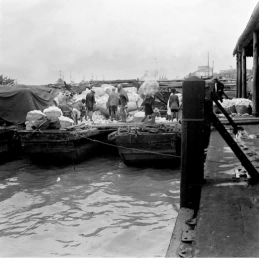
"Having both central and local enthusiasm is much better than having only one enthusiasm."
After listening to the report, the Political Bureau held several meetings to discuss and summarize, in addition to summarizing the ten major relationships, analyzing the international situation and estimating the possibility of a war breaking out. The discussion concluded that a new war of aggression against China or a world war cannot be fought in the short term, and there may be a period of peace of 10 years or more.
On April 25th, Mao Zedong delivered a speech titled "On the Ten Major Relationships" at the expanded meeting of the Politburo. He said, "It is probably unrealistic to believe that the atomic bomb is already on our heads and will fall in just a few seconds." "Making good use of and developing the old industrial foundation along the coast can give us more strength to develop and support mainland industry. If we adopt a negative attitude, it will hinder the rapid development of mainland industry.".
As a result of thorough research, "On the Ten Major Relationships" is the opening work of exploring the socialist construction path suitable for China's national conditions, containing dialectical materialism and systematic thinking. For example, in research, it was reflected that there is a lack of coordination between central and local management. The National Development and Reform Commission reported that various provinces, cities, and autonomous regions generally require the establishment of more factories, Shanghai and Tianjin require the development of more advanced products, Guangdong and Guangxi require the development of sugar and paper... Local governments are not only interested in developing light industry, but also in developing heavy industry... However, they have two concerns: one is that the central government may not allow them to do so; I'm afraid that after the factory looks like it, it will be taken away by the central government. Not only in Shanghai, but also in various places, there is a high demand for decentralization of power.
While listening to the report, Mao Zedong and other central leadership comrades put forward many opinions and ideas on improving the system and decentralizing power to local areas. In "On the Ten Major Relationships", Mao Zedong pointed out that "on the premise of consolidating the unified leadership of the central government, we should expand the power of local areas, give them more independence, and let them do more things. It is much better to have both the central and local enthusiasm than to have only one enthusiasm.".
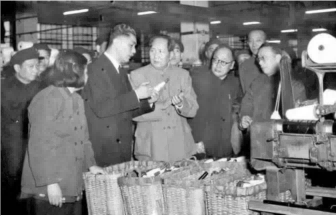
On May 2, 1956, Mao Zedong delivered a speech titled "On the Ten Major Relationships" at the Supreme State Council.
"Shanghai has a promising future and needs to develop"
After Mao Zedong delivered his speech "On the Ten Major Relationships", on May 3, 1956, Chen Yun came to Shanghai to specifically convey the central government's economic policies and Mao Zedong's instructions that "Shanghai has a future and needs to develop".
Chen Yun mentioned in his speech that Shanghai is a place with a foundation in industrial technology and culture, and should be fully utilized. In order to equip the mainland and make it easier to establish new industrial bases, the central policy is to make full use of Shanghai and other coastal cities to promote the development of old industrial bases such as Shanghai and Tianjin to a certain extent.
When discussing specific issues, Chen Yun said that Shanghai's light industry has a strong foundation and should be fully utilized. Light industry can be slightly expanded and reorganized on the existing basis. In this way, on the one hand, the production of light industry also supports heavy industry, and on the other hand, the number of unemployed people in Shanghai can be reduced, making it much easier to solve the problem of food, and the difficult situation in Shanghai will be significantly changed.
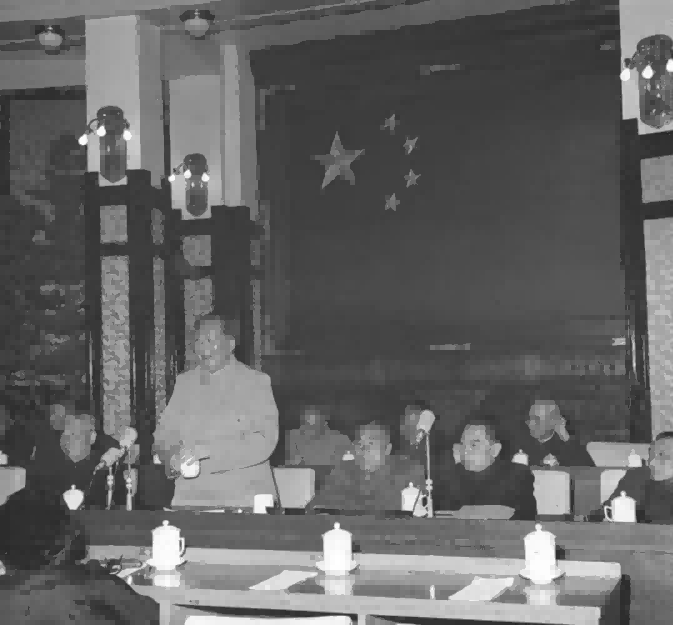
Therefore, Shanghai seized the historical opportunity and proposed the policy of "fully utilizing the industrial potential and developing Shanghai's industrial production reasonably" at the first Shanghai Party Congress held in July 1956, abbreviated as "fully utilizing and developing reasonably". This policy is the guiding principle for the industrial development of Shanghai throughout the socialist construction period - fully utilizing the industrial foundation formed over the past century, utilizing existing equipment and technological strength, to better meet the needs of the country and the people, and to serve the acceleration of the country's socialist construction. At the same time, active transformation and rational development should be carried out to further solve the contradictions in Shanghai's industrial development, better tap into its potential, and pay attention to reasonable division of labor with other regions.
In 1956, the total industrial output value of Shanghai increased by 34.3% compared to the previous year, which was higher than the national growth rate of 28.2%. It also quickly reversed the situation where the growth rate from 1953 to 1955 was lower than that of the whole country, and there was a decline in 1955. Subsequently, Shanghai further established the development policy of "high, precision, and sharpness", gradually building China's advanced comprehensive industrial and scientific and technological bases during the socialist construction period, playing an important role in improving the national industrialization level and people's lives, and laying a historical foundation for Shanghai to become a "ace" and "shortcut" after the reform and opening up. Tracing back to the origin, the research conducted by Mao Zedong and other central leaders in 1956 is of great significance.




